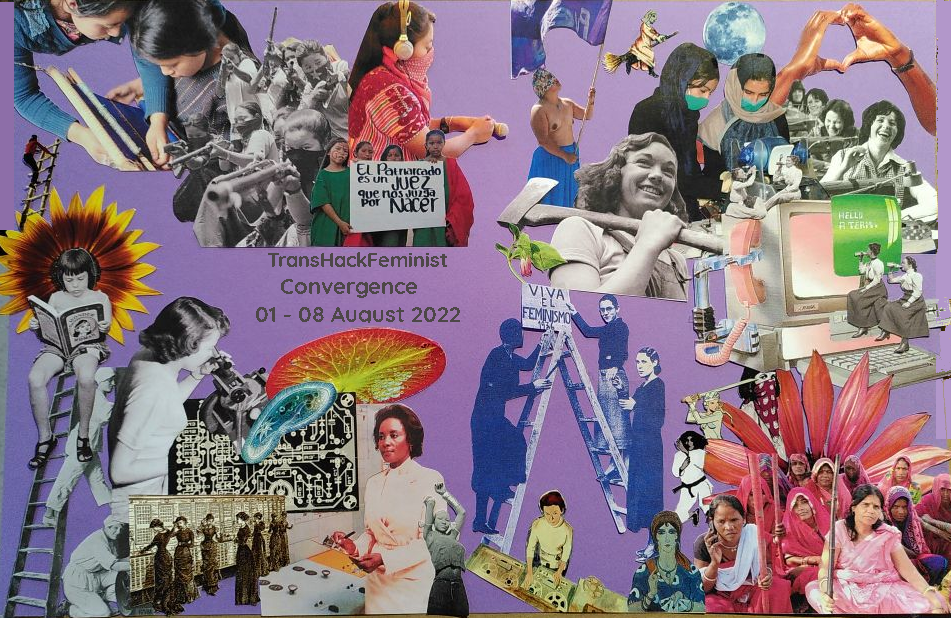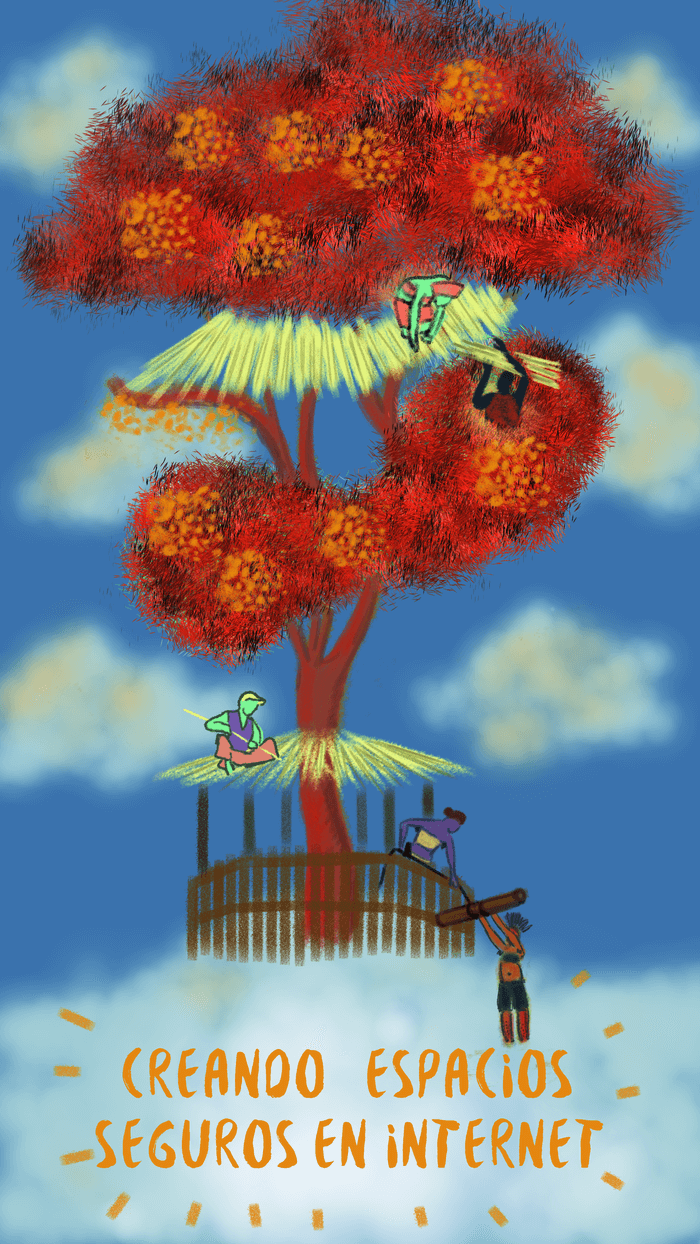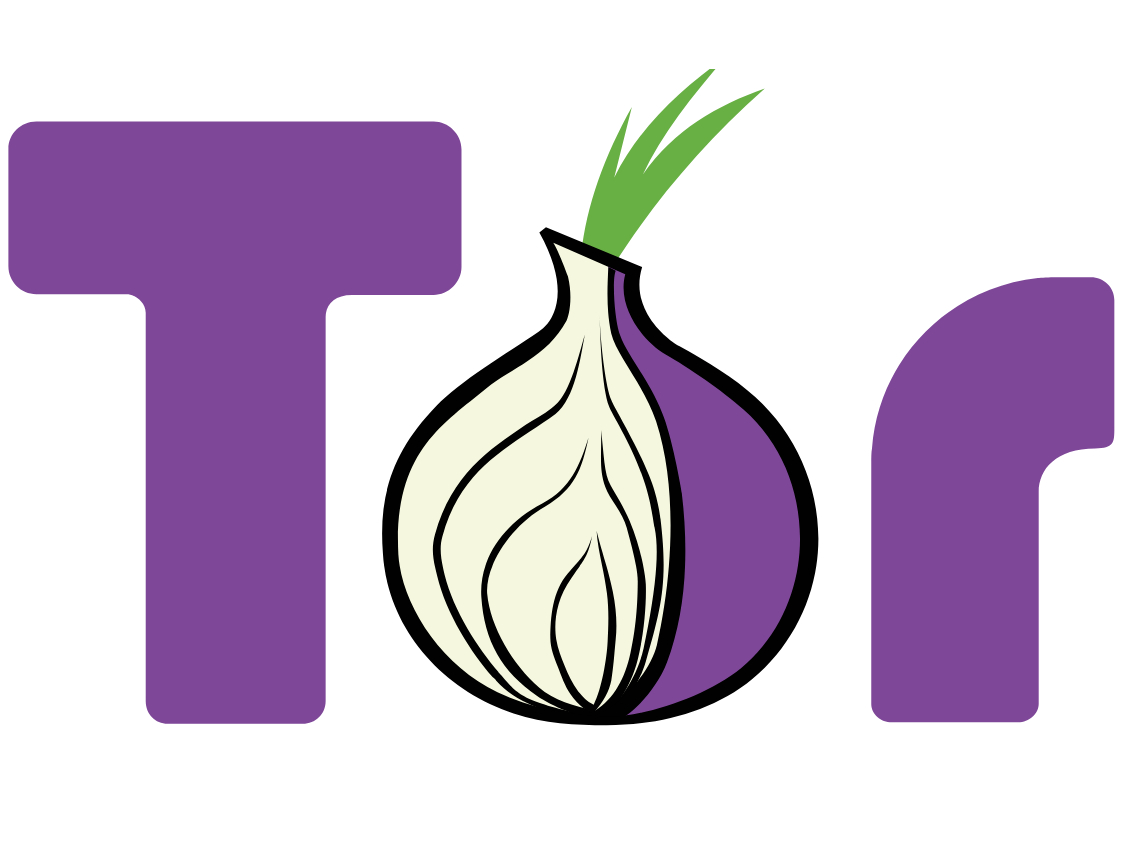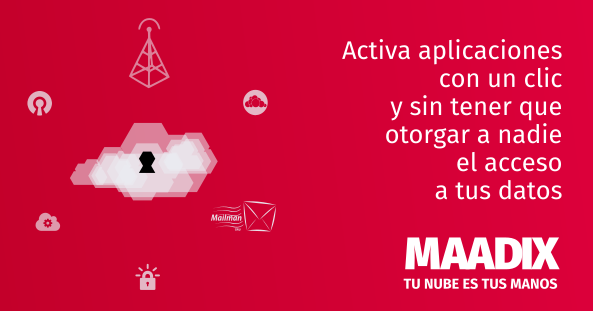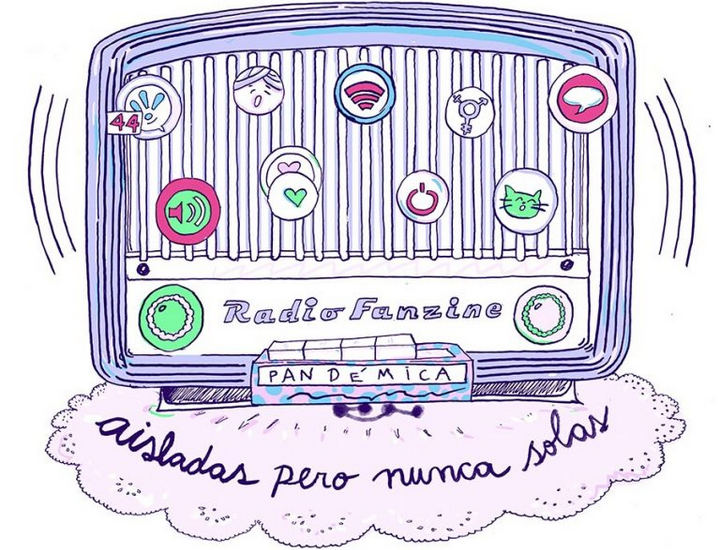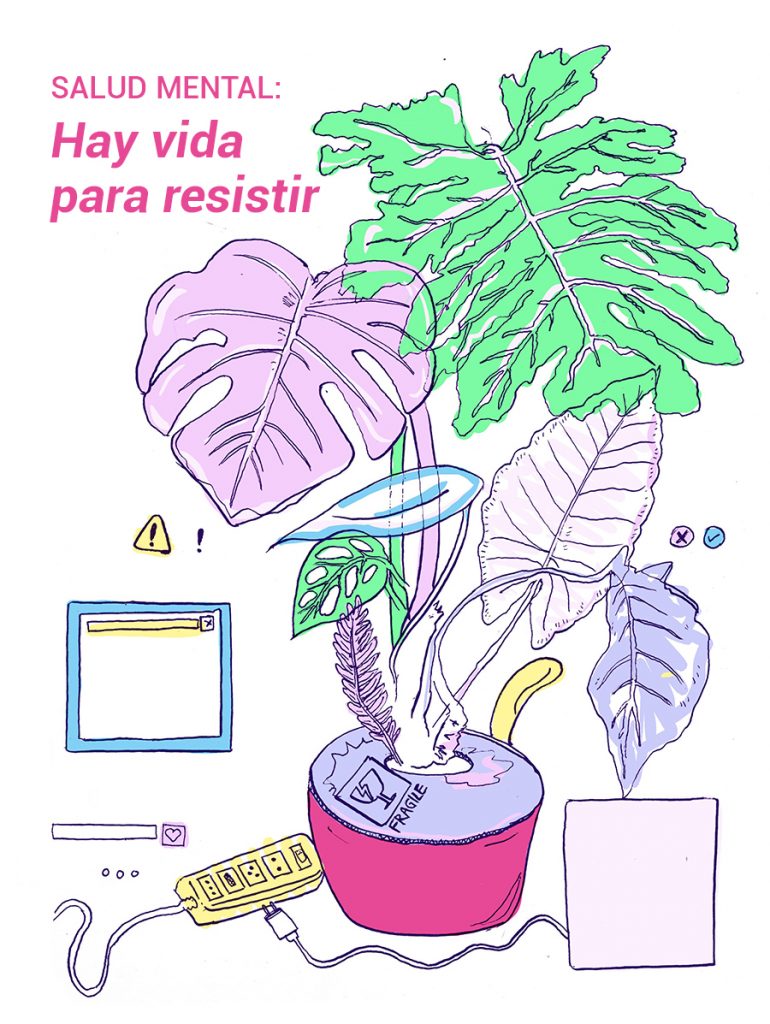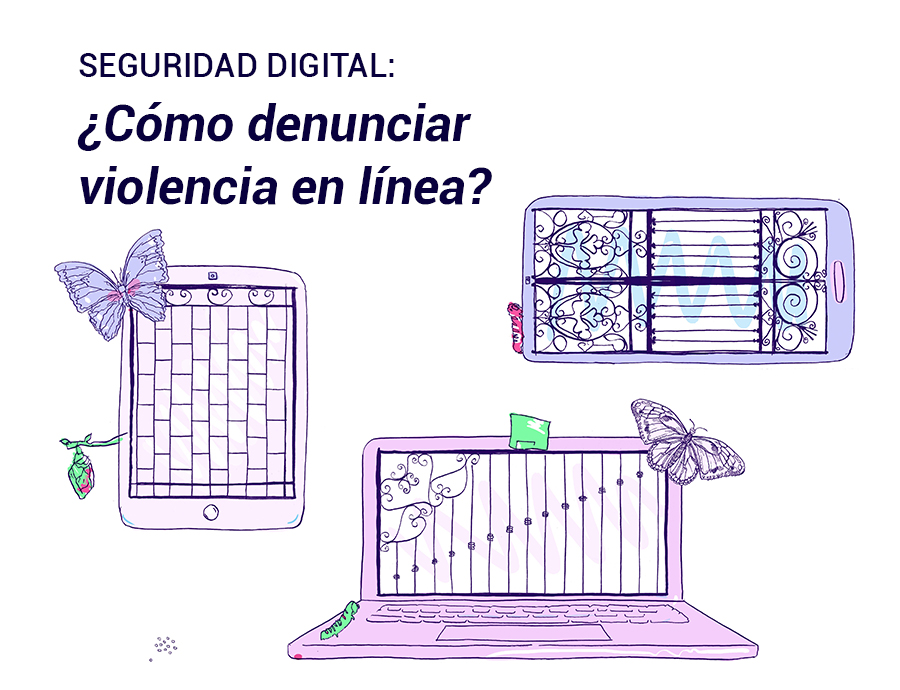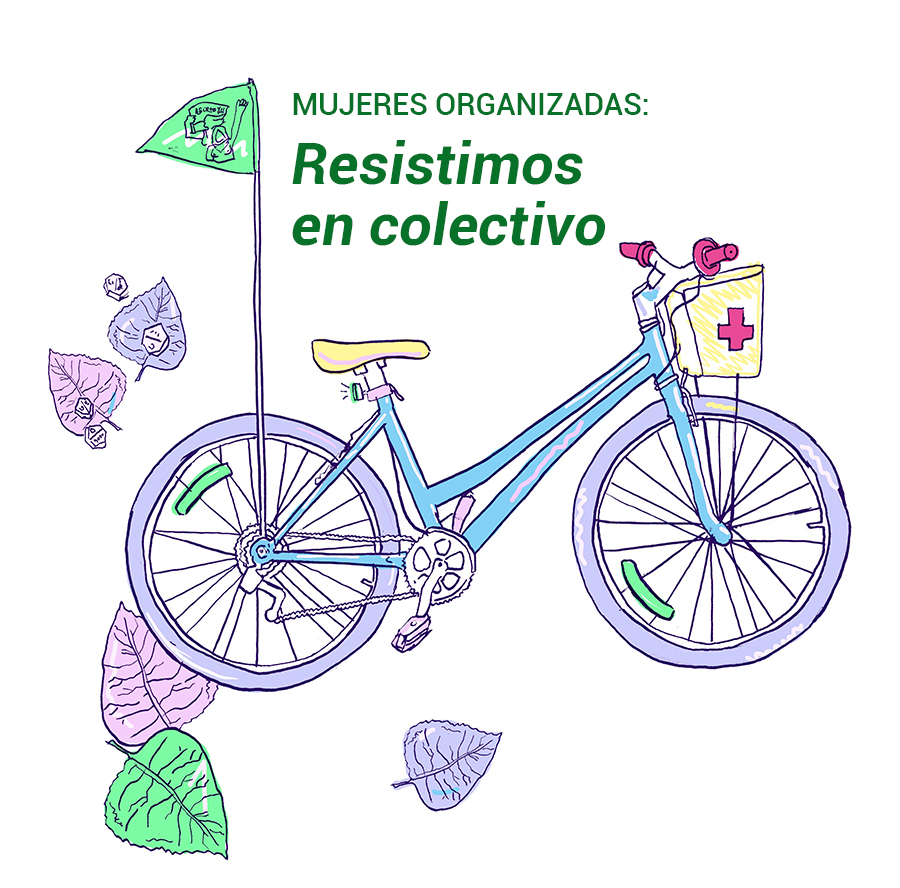Durante el curso 2021/2022 realicé un trabajo de investigación vinculado a la Universidad de La Laguna (Islas Canarias) sobre la construcción de espacios (más) seguros en internet, desde una perspectiva (trans)feminista e interseccional. A través de 5 informantes indagué en las estrategias que las comunidades están desarrollando para conformar espacios (más) seguros en internet, o al menos intentarlo, en este contexto de pandemia mundial que nos exigió virtualidad.
En esta sesión compartiré brevemente los resultados obtenidos con la intención de devolver a la comunidad el conocimiento compartido. Sería muy enriquecedor escuchar las voces y experiencias de las asistentes al THF para seguir ampliando las estrategias, reflexiones y aprendizajes.
*Avance de los resultados: la mayoría de las estrategias que describieron las compañeras tenían que ver con cuestiones relativas a los cuidados, la accesibilidad, la construcción de confianza, el acompañamiento en el uso de tecnología etc. y poco con cuestiones tecnológicas (aunque también).
Idioma: Español (con opción a Spanglish y/o Portuñol)
Documentación
[English below]
¿Cuáles son los elementos que hacen que un
Comenzamos con un breve ejercicio para entender qué significaba para nosotres construir espacios más seguros en línea:
1. ¿Qué consideras esencial para que un espacio se considere seguro?
- Confiar en el proveedor de infraestructura.
- Saber de qué se trata.
- Claridad/transparencia.
- Anonimato/pseudoanonimato posible.
- Saber quién es el administrador del sistema.
- Protección de la privacidad.
- Medidas para evitar el extractivismo de datos.
- Privacidad/cifrado.
- Medidas para prevenir/prevenir violaciones a los usuarios.
- Información y distribución descentralizada.
- Alguien es responsable del espacio / está localizable / interferiría.
- Infraestructura responsable que apoye en caso de conflicto.
- Respuestas rápidas de las “plataformas” a los problemas.
- Cuidado de la auto-organización.
- Software libre y de código abierto.
- Pagar según se sienta.
2. ¿Cuáles son los elementos que ayudan a construir un espacio seguro?
- Métodos de contacto.
- Moderación.
- Equipo de sensibilización.
- Términos y condiciones comprensibles.
- Características de accesibilidad.
- Foros abiertos.
- Buen diseño de la información.
- Un buen estado de ánimo / ambiente general.
- No permitir a los hombres cis (transfeminismo separatista).
3. ¿Cuáles son los retos en la construcción de espacios seguros?
- Lenguajes + vocabularios.
- Dinámicas de grupos tóxicos.
- Políticas de privacidad comprensibles y accesibles.
- Falta de plataformas de software libre.
- Usabilidad (accesibilidad).
- Mala conexión a Internet.
- Encontrar un lugar así (existen muy pocos).
- Límites legales.
- Lagunas lingüísticas.
- Equilibrio entre seguridad y aceptabilidad (que la gente utilice el servicio).
Debate
Hay una diferencia entre security and safety, aunque en catellano se use la misma palabra. La tecnologia que es más accesible, por lo general, está ofrecidda por empresas, y es software privativo. Muchas aplicaciones seguras de mensajería no funcionan con los lectores de celulares.
El tema de la accesibilidad también hace que la información sea accesible a las empresas, así que hay una tensión ahí.
La gente que Martu entrevistó era muy clara en que se sentía cómoda en plataformas como Zoom, que en términos técnicos es de las plataformas menos segura. Por eso tenemos que trabajar en la idea de seguridad. Los espacios que la gente siente más comodos y confortables, normalmente son los más inseguros. Si hablas de una plataforma como BBB, instalada en un servidor autónomo, ellas no se sienten seguras, porque es como una casa nueva.
Quizá sea un problema de la interfaz. Cuando se ve una interfaz que no está pulida, no genera seguridad. Las BigTech trabajan mucho en la interfaz para favorecer esa idea de seguridad.
Silvia Rivera Qusicanqui explica el capitalismo ha sido muy bueno engañándonos con la idea de comodidad, que nos ha quitado la posibilidad de dominio de las herramietnas. Parece que la comodidad es la herramienta más segura pero en realidad nos está arrebatando las herramietnas de la autogestión. Preferimos subrrogar servicios que autogestionarlos.
Cuando hablamos de seguridad quizas tenemos que preguntarnos: ¿de qué queremos protegernos? ¿De la vigilancia? ¿Del Covid? ¿De la discriminación? Porque de eso dependerán las herramientas y plataformas que usemos.
A veces la construcción de espacios virtuales nos facilita tener conversaciones que en persona nos cuesta mas (porque nos que lejos, por la violencia, por el autoritarismo digital en nuestro país, etc.). Incluso, hay conversaciones que como persona trans o no binaria no podemos tener, incluso en espacios que se autodenominan feministass/espacios seguros.
Recursos
English
Exercise
We started with a short exercise to understand what it meant to us to build safer spaces online:
1. What do you consider essential for a space to be considered secure?
- Trust infrastructure provider.
- Know about.
- Clear/transparency.
- Anonymity/pseudoanonymity possible.
- To know who is the system administrator.
- Privacy protections.
- Measures to prevent data extactivism.
- Privacy/encryption.
- Measures to prevent / precede violations to users.
- Information and decentralized distribution.
- Somebody leds responsible for the space / is reachable / would interfere.
- Accountable infrastructure that supports in case of conflict – bullshit.
- Quick responses by “platforms” to problems.
- Self-organization care.
- Free and open source software.
- Pay as you feel.
2. What are the elements that help build a safe space?
- Contact methods.
- Moderation.
- Awareness team.
- Teadable / understandable terms + conditions.
- Accessibility features.
- Open forums.
- Good information design.
- A general good mood / atmosphere.
- To not enable cis men (separatist transfeminism).
3. What are the challenges in building safe spaces?
- Languages + vocabularies.
- Toxic groups dynamics.
- Understandable and accessible privacy policies.
- Lack of free software platforms.
- Usability (accessibility).
- Poor internet connection.
- To find such a place (very few exist).
- Legal boundaries.
- Language gaps.
- Balance between security and acceptability (have people use the service).
Debate
There is a difference between security and safety, although, in Spanish, the same word is used. The technology that is most accessible is usually offered by companies and is proprietary software. Many secure messaging applications do not work with cell phone readers.
The accessibility issue also makes information accessible to companies, so there is tension there.
The people Martu interviewed were very clear that they felt comfortable on platforms like Zoom, which in technical terms, is one of the least secure platforms. That’s why we have to work on the idea of security. The spaces where people feel most comfortable are usually the most insecure. If you talk about a platform like BBB installed on a standalone server, they don’t feel safe because it’s like a new house.
Maybe it’s an interface problem. When you see an interface that is not polished, it doesn’t generate security. BigTech works a lot on the interface to promote this idea of security.
Silvia Rivera Qusicanqui explains that capitalism has been very good at deceiving us with the idea of comfort, which has taken away the possibility of mastering the tools. It seems that comfort is the safest tool, but in reality, it is taking away the tools of self-management. We prefer to outsource services rather than self-manage them.
When we talk about security, perhaps we have to ask ourselves: what do we want to protect ourselves from? From surveillance? From Covid? From discrimination? Because that is what the tools and platforms we use will depend on.
Sometimes the construction of virtual spaces makes it easier for us to have conversations that are more difficult to have in person (because we are far away, because of violence, because of digital authoritarianism in our country, etc.). There are even conversations that, as trans or non-binary people, we cannot have, even in spaces that call themselves feminist/safe spaces.
Recommendations to create a more accessible digital space
- Check that the platform can be used with the most popular screen readers (JAWS and NVDA for desktop, VoiceOver for iOS, Voice Assistant for Android).
- Provide alternative text for images and video.
- Remember that when you share your screen the content is not available to screen readers, so make sure to provide proper description of the content or share alternative content.
- Provide subtitles for videos.
- Provide audio description in videos in which visual content is relevant.
- Consider using platforms which provide quality automatic subtitles.
- Provide sign language interpretation.
- Avoid acronyms or words that are not able to read outloud.
- Provide easy to read texts, with short and simple sentences, to reach wide audiences, specifically those without formal education. Consider providing easy reading versions.
- Make pauses at least every 45/50 minutes.
- We discourage the use of music that compromises the use of screen readers.
- Do not cover your mouth while speaking to facilitate lip reading.
- Speak at a moderate pace to facilitate interpretation, subtitling and, in general, favor understanding.
- Prioritize the use of platforms that do not required extensive data use, for people with poor connection or scarce resources.
- Make this accessibility recommendations available to the participants at the begging of the session.
- Ask participants in advance whether they have any requirements that haven’t been considered beforehand.
Checklist to consider when creating safer spaces.
Essential
- Take your time to introduce the features of the platform soy participants get familiarized.
- Explain the reasons why you chose this platform and not other.
- Make sure you have the support of a technical team.
- Provide a policy for the space, that at least contains:
- Expressions, jokes, comments or contents that are sexist, transphobic, LGTBphobic, racist, ableist, classits, fat-shammIng, etc., are not allowed.
- Violent actions, harassment or sexual harassment are not allowed.
- Promote good accessibility practices.
- Recommend the use of trigger warnings for sensible content.
- Prevent people with more privileges from monopolizing the participation.
- Make explicit the ways to report policy noncompliance.
- Make explicit the consequences of policy noncompliance.
Resources
